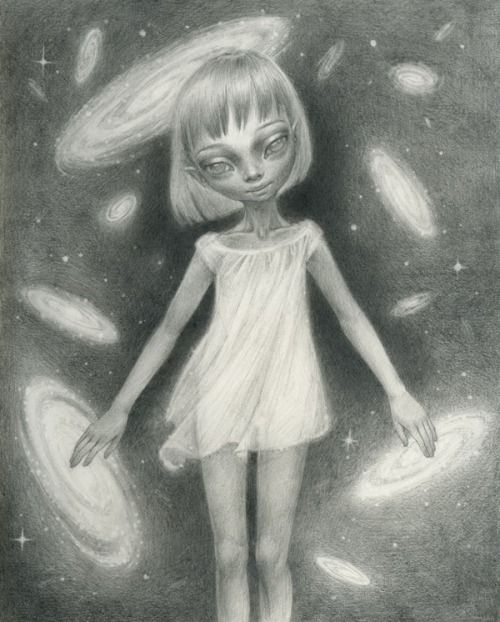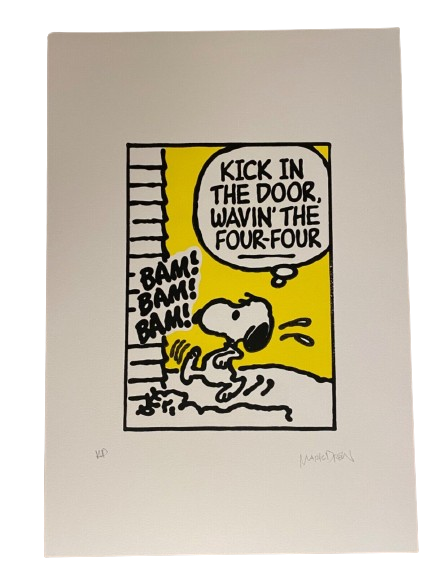
Black & White
-

Mark Drew Four-Four Biggie AP Silkscreen Print by Mark Drew
Four-Four Biggie AP Silkscreen Print by Mark Drew Artist Proof Hand-Pulled Screen Print on Fine Art Paper Limited Edition Pop Street Artwork & Graffiti. A.P. Artist Proof 2013 Signed & A.P. Marked Limited Edition Run Artwork Size 11.42.x16.54 The Fusion of Hip-Hop and Comics in Mark Drew's Silkscreen Print The "Four-Four Biggie" silkscreen print by Mark Drew epitomizes the intriguing blend of street culture and pop art sensibilities. This Artist Proof hand-pulled screen print on fine art paper is a striking example of Drew's limited edition work that seamlessly merges iconic images from classic American comics with lyrics from seminal 90s hip-hop tracks. The piece, marked as an Artist Proof from 2013 and signed by Drew, is a highly collectible item within Pop Street Artwork and Graffiti, representing a limited edition run with 11.42 x 16.54 inches. In this artwork, Drew pulls a quote from The Notorious B.I.G.'s "Kick in the Door," juxtaposing it with the innocence of a cartoon character. This stark contrast is symbolic of his style, which often explores the relationship between childhood imagery nostalgia and hip-hop culture's more grown-up themes. The result is a layered piece that speaks to the complexities of memory, cultural identity, and the passage of time. Artistic Significance of Screen Printing in Street Pop Art Screen printing has a storied history within pop, and street art is celebrated for its ability to reproduce vivid colors and crisp graphics. Drew's adoption of this technique for "Four-Four Biggie" allows for the precision and clarity needed to bring together the boldness of hip-hop lyricism with the simplicity of comic strip art. Hand-pulling each print ensures that every piece is unique, adding individuality to the work collectors and admirers of Street Pop Art and Graffiti Artwork often seek. Artist Proofs, like the one Drew has created for "Four-Four Biggie," are traditionally the first prints pulled from a new screen, used to check the quality of the print before the complete edition is run. They are often kept by the artists themselves, making them rarer and highly prized than the edition prints. The A.P. mark on this print indicates its status as proof, and Mark Drew's signature certifies its authenticity, increasing the artwork's value and desirability. Impact of Mark Drew's Work on Contemporary Art Mark Drew's influence on the contemporary art scene is evident in how his work resonates with audiences. His ability to draw from various elements of urban culture and synthesize them into something new and compelling places him among the innovators in the field. The "Four-Four Biggie" print is a testament to his creative vision, where the past and present collide to create a dialogue that is as relevant today as when the song lyrics were first penned. The appeal of Drew's work lies in its accessibility and its depth. The familiar images draw viewers in, and they are challenged to delve deeper into the meaning behind the juxtaposition of text and image. This characteristic of Drew's art aligns with the broader goals of Street Pop Art and Graffiti Artwork: to engage the public in a visual conversation that is both entertaining and thought-provoking. Through pieces like "Four-Four Biggie," Drew continues contributing to this vibrant and ever-evolving art form.
$1,341.00


